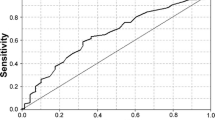Background: Obesity is a chronic inflammatory condition, with related steatohepatitis and liver fibrosis. The authors analyzed the hepatic histopathology in morbidly obese patients and predictors of concurrence of clinical and/ or histopathologic findings of steatohepatitis with other forms of chronic liver disease. Methods: The histopathologic findings in the liver of 160 patients who were undergoing laparoscopic gastric bypass or gastric banding for morbid obesity, were examined. Clinical data (gender, age, BMI and associated diseases) and laboratory evaluation were obtained from the patient records. The degree of steatosis, ballooning degeneration, lobular inflammation and fibrosis were determined and scored. Results: Among the patients, 62.5% (n=100) were females and 37.5% (n=60) were males, age 27 ± 12 years, with mean BMI 43 ± 5.8 kg/m2. 63, 54, 26, 15 and 2 patients were diagnosed as non-nonalcoholic steatohepatitis (non-NASH), NASH, chronic hepatitis B (CHB), alcoholic steatohepatitis and chronic hepatitis C (CHC), respectively. The prevalence of NASH was 33.8%, of which 5 patients (9.2%) had bridging fibrosis, but no cirrhosis was found in the NASH group. The prevalence of CHB was 16.3%, of which 3 patients (11.6%) had bridging fibrosis and/or cirrhosis. Multivariate analysis showed an association between steatosis and AST, ALT, GGT, C-peptide, insulin, HOMA-IR and adiponectin. The predictors of ballooning degeneration were serum sugar and AST, whereas the predictors of lobular inflammation were AST and ALT. There was a trend toward a correlation between abnormal liver function, insulin resistance, steatosis, liver cell injury and Mallory body in the NASH population. BMI, C-peptide, steatosis, ballooning degeneration and portal inflammation were significantly different between NASH and CHB groups, but only steatosis and ballooning degeneration were independent factors of NASH compared with CHB group after multivariate analysis. Overall, AST, AST/ALT ratio, uric acid and portal inflammation were independently associated with advanced fibrosis, while only Mallory body (P=0.033) and portal inflammation (P=0.015) were significantly different between mild-moderate fibrosis and advanced fibrosis in the NASH patients. Conclusion: Hepatic steatosis, features of metabolic syndrome and liver cell injuries were common in morbidly obese patients. Abnormal liver function and portal inflammation were related to hepatic fibrosis. The coexistance of clinical and histologic features of steatohepatitis with another chronic liver disease may reflect the biological significance of the chronic inflammatory condition in the obese population, which requires further investigation.
Similar content being viewed by others
Author information
Authors and Affiliations
Rights and permissions
About this article
Cite this article
Liew, PL., Lee, WJ., Lee, YC. et al. Hepatic Histopathology of Morbid Obesity: Concurrence of Other Forms of Chronic Liver Disease. OBES SURG 16, 1584–1593 (2006). https://doi.org/10.1381/096089206779319392
Published:
Issue Date:
DOI: https://doi.org/10.1381/096089206779319392




